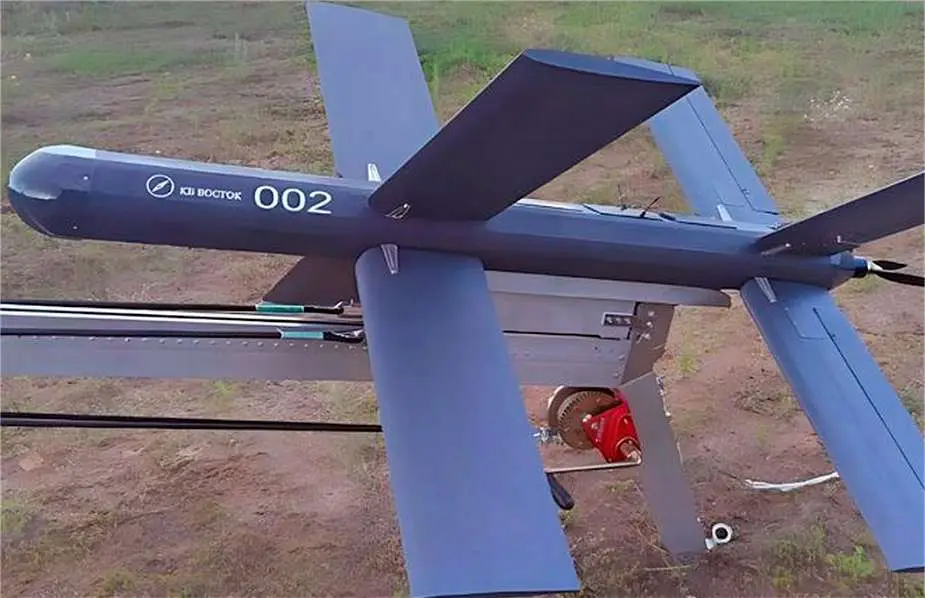Russia has announced the mass production of the new Scalpel loitering munition also called kamikaze drone, with plans to deliver several thousand units to its military forces deployed in Ukraine by the end of 2024. This move underscores the increasing reliance on drone warfare by Russian forces in the ongoing conflict with Ukraine.
Follow Army Recognition on Google News at this link

The new Russian-made Scalpel loitering munition is a low-cost version of the Lancet. (Picture source Social Network)
The Scalpel, described as a budgetary version of the more well-known Lancet drone, has already seen action in Ukraine, albeit in limited numbers. The decision to boost its production comes as a testament to the effectiveness of such unmanned attack platforms in modern warfare. According to Russia's Vostok Design Bureau, which oversees the Scalpel's development, this increase in supply aims to enhance the capabilities of Russian forces deployed in the region.
The Russian Company Vostok Design Bureau highlights several key features of the Scalpel, including a payload weight of 5 kg and a take-off weight of 10.5 kg. With a cruising speed of 120 km/h and a range of 40 km, the Scalpel is engineered to offer a cost-effective solution for precision strikes. Its development reflects a broader trend in military strategy that emphasizes the use of unmanned systems for both reconnaissance and combat operations, minimizing the risk to human soldiers.
Loitering munitions, often dubbed "kamikaze drones" for their ability to linger over a target area before striking, have been employed by Russian forces in Ukraine since 2023. The Vostok Design Bureau has made several enhancements to the Scalpel, including a more compact and faster-deploying launch system, improved communications, and regular updates to adapt to changing battlefield conditions.
The success of these drones, particularly the Lancet, has provided Russian forces with a significant tactical advantage. The Lancet's track record in Ukraine has demonstrated the potency of loitering munitions in disrupting enemy operations and destroying key assets with precision. The introduction and subsequent ramp-up of the Scalpel are expected to further solidify this approach, offering a blend of reconnaissance and strike capabilities that can be rapidly deployed across the battlefield.
Loitering munition represents a new and evolving threat on the battlefield for both Ukrainian and Russian forces, particularly in their capacity to target and destroy combat vehicles, tanks, and artillery systems. These unmanned aerial vehicles, designed to hover over a target area before identifying and striking high-value targets with precision, offer a significant tactical advantage. Their deployment complicates traditional defense strategies, forcing both sides to adapt to a warfare landscape where key assets can be eliminated with little warning. The increased use of such drones underscores a shift towards more remote and technologically advanced forms of combat, with the potential to significantly impact the effectiveness and survivability of armored units and artillery positions in the ongoing conflict.
This shift towards a more automated and remote form of warfare by Russia could potentially alter the dynamics on the ground in Ukraine. The increased use of drones like the Scalpel and Lancet signifies a move towards less costly, but highly effective, military assets that can deliver decisive blows without the need for direct human involvement in combat zones. As the conflict continues, the effectiveness and ethical implications of such technology will undoubtedly remain subjects of intense scrutiny and debate.
News Russia Ukraine War
















